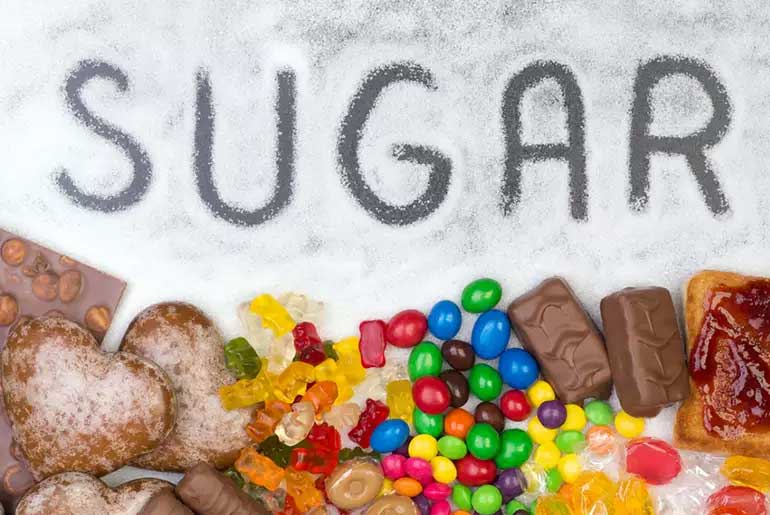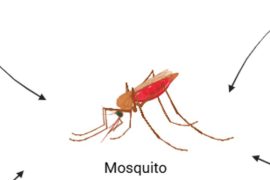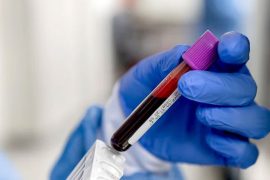Craving sweets, even on a full stomach, or experiencing irritability without daily sugary treats could be signs of sugar addiction. Sugar has the power to provide an immediate mood boost, which is why people often turn to sugary snacks when they feel low on energy or need a pick-me-up. While small amounts of sugar are generally harmless, excessive consumption can lead to various health problems.
Similar to the way drugs can be addictive, sugar can also lead to cravings that seem insatiable. The issue with sugar is its rapid absorption into the bloodstream, causing spikes in insulin levels. Excess glucose is stored in the liver, muscles, and as fat, contributing to a range of chronic health conditions such as diabetes, hypertension, fatty liver, and obesity.
According to dietary guidelines for Americans, adults consuming 2,000 calories a day should aim for less than 50 grams of sugar, which should account for no more than 10% of their daily caloric intake. Monitoring and limiting sugar intake are essential for maintaining good health and preventing the adverse effects of sugar addiction.
7 signs that show your body is addicted to sugar:
1. Salt cravings:

Salt cravings can sometimes be a sign that you’re consuming excessive amounts of sugar. Sugar is considered an “empty nutrient” because it provides calories but lacks nutritional value. Consuming too much sugar can lead to imbalances in your intake of healthy proteins and fats, potentially causing cravings for salty foods. Additionally, research indicates that excessive salt intake can have adverse effects on blood pressure and increase the risk of heart disease. It’s important to maintain a balanced diet to avoid such cravings and promote overall health.
2. Constant fatigue:

Craving sugary foods when your blood sugar levels drop is a common response. However, this can lead to a cycle of rapid spikes and crashes in blood sugar levels. When you consume sugary items, your blood sugar spikes quickly, providing a temporary energy boost. But this is often followed by a rapid drop in blood sugar levels, leaving you feeling tired and irritable. It’s essential to manage your diet to avoid these extreme fluctuations in blood sugar and maintain stable energy levels throughout the day.
3. Hiding your sugar intake:

Hiding your sugar consumption and making excuses for indulging in sugary treats can be signs of a sugar addiction. While many people are aware of the need to cut back on sugar, addiction can make it difficult to do so. If you find yourself concealing your sugar intake and rationalizing it, it may be time to acknowledge and address this addiction for the sake of your health and well-being. Seeking support and guidance from healthcare professionals or support groups can be helpful in overcoming sugar addiction.
4. Poor skin health:

Excess sugar in the bloodstream can lead to a process called glycation, where sugar molecules attach to proteins in the body, forming new molecules known as Advanced Glycation End Products (AGEs). This glycation process can have detrimental effects, including accelerating the aging of your skin. The more glycation that occurs, the faster the aging of the skin can become. AGEs are associated with various skin issues, including wrinkles, loss of elasticity, and reduced collagen production, contributing to an aged appearance. Therefore, managing sugar intake can be beneficial not only for overall health but also for maintaining youthful-looking skin.
5. Eating when not hungry:

Craving dessert after a satisfying meal can be influenced by various factors. Digestion itself requires energy and may contribute to post-meal sugar cravings. Additionally, negative emotions such as anxiety, stress, depression, loneliness, and boredom can act as triggers for sugar cravings. People often turn to sugary treats as a way to cope with or alleviate these negative moods, seeking the instant mood lift that sugar can provide. Being aware of these triggers and finding healthier alternatives to manage emotions can help reduce the urge for excessive sugar consumption and promote better overall well-being.
6. Behavioral issues:

Experiencing irritability and intensifying cravings the longer you go without sugar can indeed be signs of sugar addiction. When your body becomes dependent on sugar, it can lead to withdrawal-like symptoms when you try to cut back or eliminate sugar from your diet. These symptoms can include mood swings, irritability, and even stronger cravings for sugary foods. Recognizing these behaviors and physical responses is essential, as it may indicate a need to address and manage your sugar consumption to break the addiction and promote better overall health. Seeking professional guidance or support can be beneficial in overcoming sugar addiction.
7. Use sugar to soothe:

Craving something sweet as a coping mechanism after a break-up or a bad day can indeed be a psychological symptom of sugar addiction. Many people turn to sugary foods as a way to comfort themselves in times of stress, boredom, depression, or anxiety. The temporary mood boost that sugar provides can act as a form of self-soothing. However, it’s essential to recognize these patterns and consider healthier ways to cope with difficult emotions and situations rather than relying on sugar, as excessive sugar consumption can lead to health issues over time.
Tips to overcome sugar cravings:
1. Having more probiotic foods:

Foods rich in beneficial bacteria, such as apple cider vinegar, kimchi, and tempeh, offer numerous advantages that can aid in curbing sugar cravings and enhancing overall health. These probiotic-rich foods support a balanced gut microbiome, which research suggests can have several positive effects. These include the potential to regulate blood sugar levels, helping to reduce sugar cravings and mitigate diabetes risk. Additionally, certain probiotics in the gut may influence appetite regulation, aiding in controlling cravings, including those for sugary foods.
Furthermore, the unique and robust flavors of foods like kimchi and tempeh can engage and stimulate taste buds, providing a distraction from sugar cravings. Incorporating such foods into your diet can contribute to a holistic strategy for reducing sugar cravings and promoting better health.
2. Drink more water:

Sugar cravings may sometimes be indicative of dehydration. Insufficient water intake can lead to reduced overall fluid levels in the body, resulting in fatigue and low energy. Consequently, the body may signal a need for a quick energy boost, leading to cravings for sugar. Increasing your water consumption can be an effective strategy for managing and regulating sugar cravings by addressing potential dehydration and maintaining adequate hydration levels in the body.
3. Eat more proteins and healthy fats:
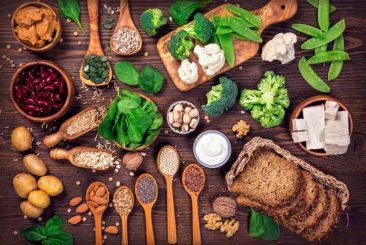
Including foods like eggs, lean meat, chicken breast, fatty fish, nuts, and avocados in your regular diet can be highly beneficial. These foods are not only nutritious but also help maintain a sense of fullness for extended periods without causing rapid spikes in blood sugar levels. Eggs provide protein and healthy fats, while lean meat and chicken breast offer lean protein sources. Fatty fish like salmon are rich in omega-3 fatty acids, promoting both satiety and heart health. Nuts, such as almonds and walnuts, provide a satisfying combination of healthy fats and protein, and avocados offer nutrient-rich fats that contribute to a sense of fullness, making them valuable additions to a balanced diet.
4. Eat more fiber:
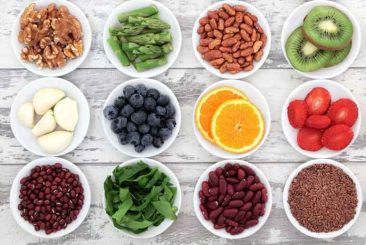
Incorporating fiber-rich foods like coconut, broccoli, almonds, and cauliflower into your daily diet is an excellent strategy for managing sugar cravings and promoting stable blood sugar levels. These foods offer an array of benefits, including sustained energy and a reduced likelihood of experiencing rapid spikes in blood sugar. Coconut provides dietary fiber and healthy fats, while broccoli is a nutrient-dense vegetable packed with fiber. Almonds offer both fiber and protein, contributing to a feeling of fullness and steady energy. Additionally, cauliflower is a versatile vegetable that can be a valuable part of a balanced diet, providing fiber and essential nutrients that support overall well-being.
Disclaimer:
The information contained in this article is for educational and informational purposes only and is not intended as a health advice. We would ask you to consult a qualified professional or medical expert to gain additional knowledge before you choose to consume any product or perform any exercise.

